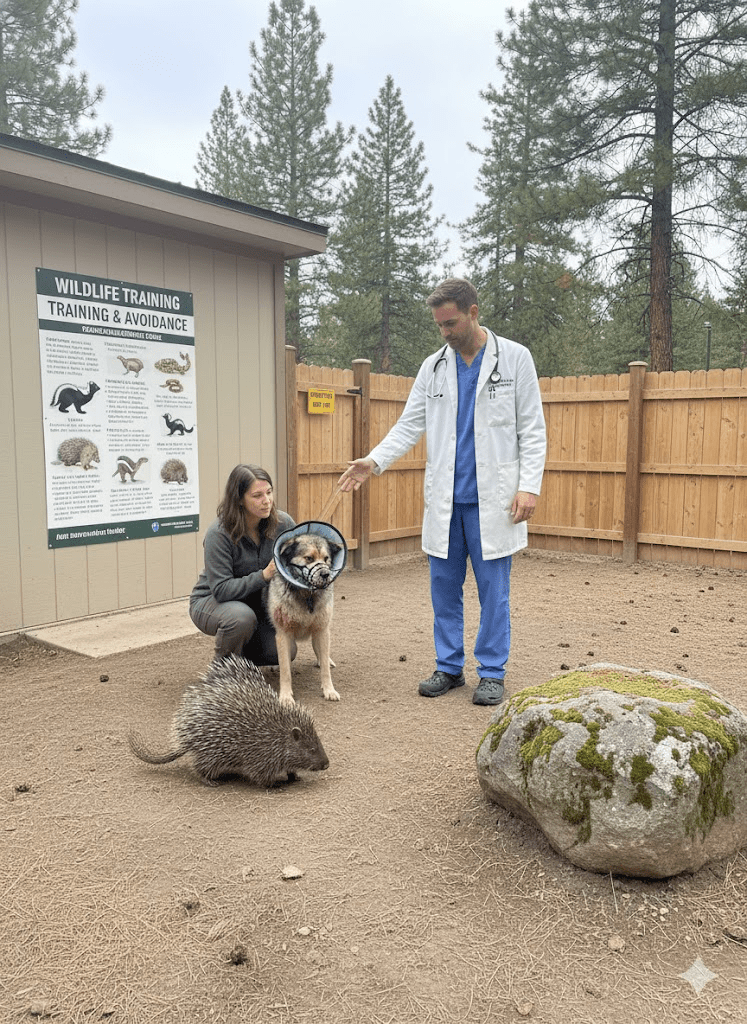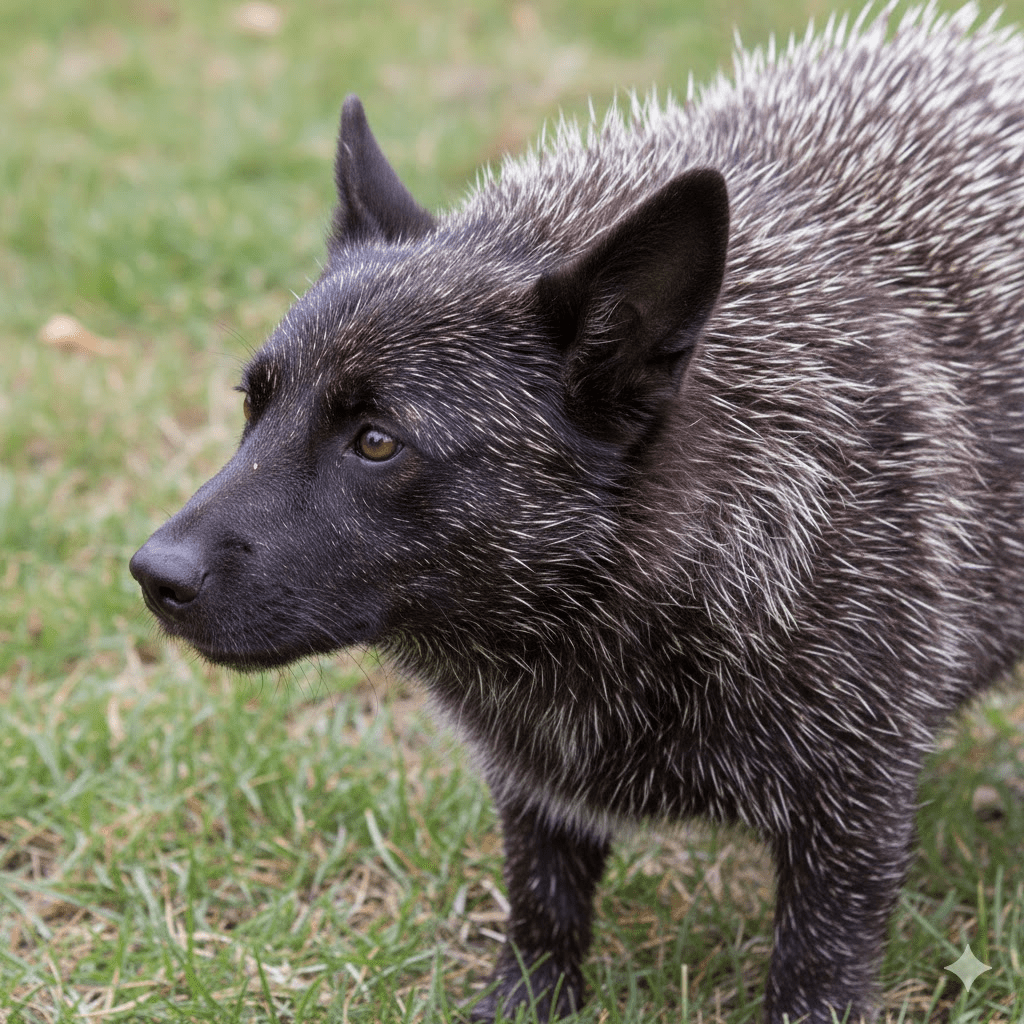The image before us is a stark, heart-wrenching reminder of a common and painful predicament many dog owners face: a close encounter between their beloved canine and a porcupine. This particular dog’s face, riddled with quills, speaks volumes about the immediate aftermath of such an incident. Its expression, though obscured by the numerous barbed projectiles, hints at discomfort and distress, while the surrounding fur shows signs of irritation and potential injury. A human hand gently rests on the dog’s head, conveying a sense of compassion and concern from an owner who is undoubtedly anxious and seeking to alleviate their pet’s suffering. The scene is a powerful snapshot, urging us to delve deeper into understanding why these encounters happen, how to respond, and most importantly, how to prevent them. This article aims to provide a professional and informative guide for dog owners, shedding light on the dangers of porcupine quills, the proper steps to take in an emergency, and practical strategies to minimize the risk of such painful incidents, ultimately prioritizing the safety and well-being of our curious canine companions.

Porcupines are North American rodents easily identified by their coat of sharp quills, which serve as their primary defense mechanism. When threatened, a porcupine will raise its quills and, if contact is made, the barbed quills can easily detach and embed themselves in the skin of an aggressor. Dogs, with their innate curiosity and predatory instincts, are particularly susceptible to these encounters. Their natural inclination to investigate new scents and movements, combined with a lack of understanding regarding the porcupine’s defense, often leads them to get too close. The resulting interaction almost invariably ends with a painful mouthful or face full of quills, as depicted in the initial image. This regrettable outcome highlights the critical need for owners to be aware of porcupine habitats and to take preventative measures, especially in areas where these fascinating but well-defended creatures are known to roam. Understanding the behavior of both dogs and porcupines is the first step in mitigating these painful incidents.

When a dog encounters a porcupine, the quills can penetrate deeply and are designed with microscopic barbs that make them notoriously difficult and painful to remove. Attempting to pull them out yourself without proper tools or technique can cause the quills to break, leaving embedded fragments that can migrate, leading to serious infections, abscesses, or even damage to internal organs. Moreover, the pain and stress of the experience can make a dog defensive and uncooperative, increasing the risk of injury to both the pet and the owner during removal attempts. The quills can also affect a dog’s ability to eat, drink, and breathe if they are located around the mouth or throat. Therefore, seeking immediate veterinary attention is paramount. A professional veterinarian can sedate the dog to minimize pain and stress, ensuring all quills are safely and completely removed, and often prescribing antibiotics to prevent infection.

Following an incident, even after professional quill removal, vigilant post-care is essential. Owners should closely monitor their dog for any signs of infection, such as swelling, redness, discharge, or lethargy. It’s not uncommon for a few quills, or fragments of quills, to be missed during the initial removal, especially if they were deeply embedded or broke off. These can surface days or even weeks later, causing renewed discomfort and potentially necessitating another veterinary visit. Administering prescribed antibiotics and pain medication as directed by the veterinarian is crucial for a smooth recovery. Furthermore, providing a calm and comfortable environment for the dog to rest and recuperate will aid in their physical and emotional healing from such a traumatic experience.







